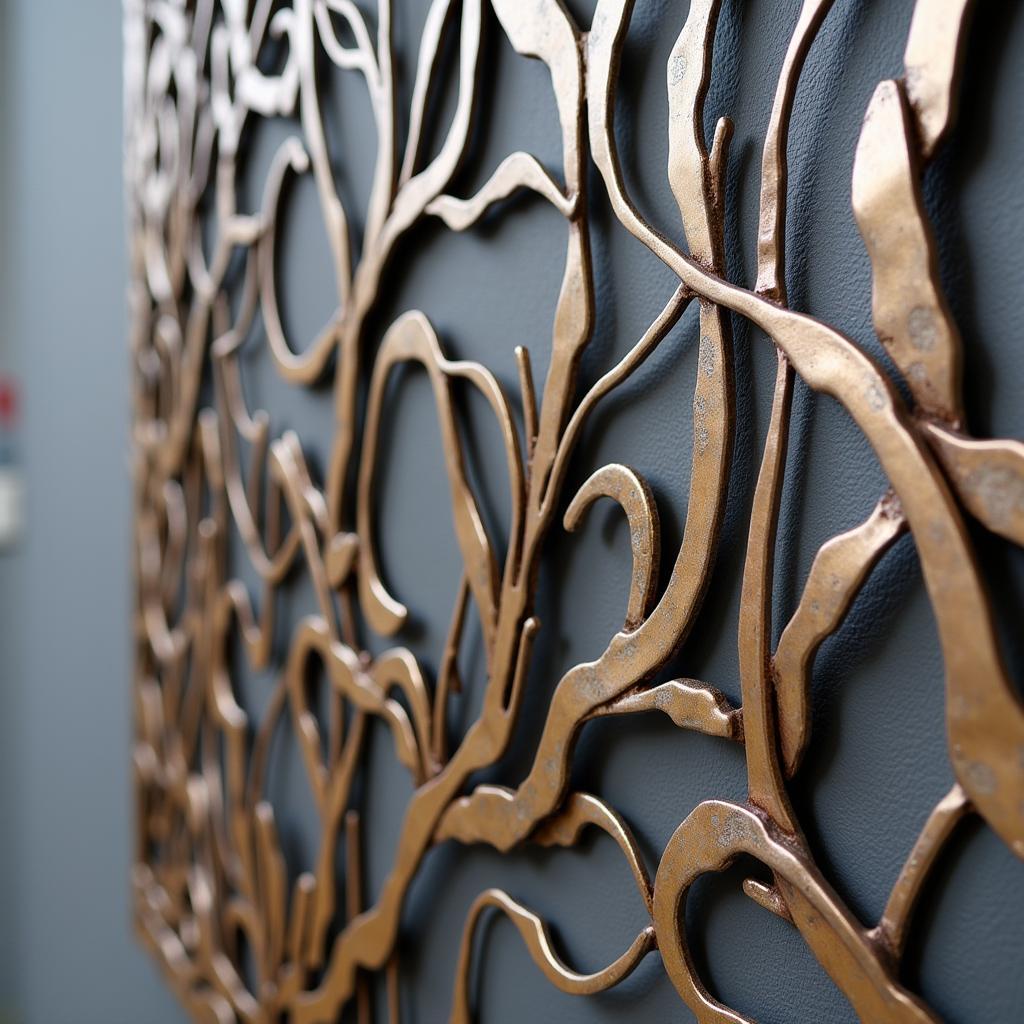Exploring the Magic of Australian Aboriginal Art Dots
Australian Aboriginal Art Dots are more than just aesthetically pleasing visuals; they represent a rich tapestry of culture, storytelling, and connection to the land. This unique art form, passed down through generations, utilizes dots to depict Dreamtime stories, landscapes, and the intricate relationship between humans and nature. Let’s delve into the captivating world of Australian Aboriginal dot painting and discover its profound significance.
Unraveling the Mysteries of Aboriginal Dot Painting
Aboriginal dot painting is a relatively recent development in a tradition of artistic expression that spans millennia. Traditionally, Aboriginal Australians used natural pigments derived from ochre, charcoal, and clays to create rock art, body painting, and ground designs for ceremonies. Dot painting emerged in the 1970s in Papunya, a desert community in Central Australia, as a way to translate these ancient stories onto canvas. The technique involves applying small dots of paint onto the surface, creating intricate patterns and vibrant depictions of Dreamtime narratives.
What is the significance of dots in Aboriginal art? The dots are not merely decorative; they represent the energy and life force that permeates the land. They can symbolize waterholes, stars, plants, and animal tracks, connecting the artwork to the physical and spiritual world.
The Cultural Significance of Australian Aboriginal Art Dots
Aboriginal art is intrinsically linked to the Dreamtime, the foundational creation stories that explain the origins of the world, the people, and the natural environment. These stories are passed down orally through generations and are often encoded in the complex symbolism of dot paintings. By depicting these narratives, Aboriginal artists maintain their cultural heritage and share their profound connection to the land.
More Than Just Aesthetics: The Deeper Meaning Behind the Dots
Beyond their visual appeal, the dots in Aboriginal art serve a practical purpose. They obscure sacred knowledge from those outside the community, ensuring that only initiated individuals can fully understand the stories depicted. This practice protects the cultural integrity of the Dreamtime narratives.
Exploring Different Styles and Regions of Dot Painting
Different regions across Australia have developed distinctive styles of dot painting, reflecting the unique landscapes and cultural traditions of each area. The desert communities of Central Australia are known for their vibrant, densely dotted canvases depicting Dreamtime narratives and topographical maps. Coastal regions often feature depictions of marine life and water spirits, while Arnhem Land in northern Australia is famous for its intricate cross-hatching techniques combined with dots.
What are some common motifs in Australian aboriginal dot painting? Common motifs include concentric circles representing campsites or waterholes, U-shapes symbolizing people, and winding lines depicting rivers or journeys. Animal tracks, plants, and celestial bodies are also frequently depicted, reflecting the intimate relationship between Aboriginal people and their environment.
Connecting with Country: The Importance of Place in Aboriginal Art
The concept of “Country” in Aboriginal culture extends far beyond the physical landscape. It encompasses the spiritual, ancestral, and cultural connections to a particular place. Aboriginal art is a powerful expression of this connection, allowing artists to visually represent their relationship with Country and share its stories with the wider world.
Conclusion
Australian aboriginal art dots offer a unique window into one of the world’s oldest living cultures. They are more than just beautiful images; they are powerful expressions of identity, storytelling, and connection to the land. By understanding the significance of the dots, we can appreciate the profound cultural heritage embedded within this captivating art form. Explore the vibrant world of Aboriginal art and discover the stories waiting to be unveiled. aboriginal art utopia provides a wealth of information and resources to further your understanding of this fascinating art form.
FAQ
- What do the different colors in Aboriginal dot paintings represent? Colors often have symbolic meanings related to the land, animals, or Dreamtime stories.
- How is Aboriginal dot painting made? Traditionally, natural pigments are used, but modern acrylic paints are also common. Dots are applied using various tools like sticks, brushes, or even fingertips.
- Where can I see authentic Aboriginal dot paintings? Art galleries, museums, and cultural centers across Australia showcase Aboriginal art.
- Can I learn to create Aboriginal dot paintings? Yes, many workshops and online resources offer guidance on this art form. Respecting cultural protocols and seeking permission from Aboriginal communities is essential when engaging with this tradition.
- What is the difference between dot painting and other forms of Aboriginal art? Dot painting is a relatively modern form, while traditional Aboriginal art includes rock art, body painting, and bark painting.
- What is the significance of the U shapes in Aboriginal dot paintings? They often represent people, sitting or standing.
- Are there any ethical considerations when buying Aboriginal art? Ensure you are purchasing authentic artwork from reputable sources that support Aboriginal artists and communities.
Other questions you might have
- How can I support Aboriginal artists and communities?
- What are some other forms of Indigenous Australian art?
- Where can I learn more about the Dreamtime stories?
For more information on Aboriginal art, check out aboriginal art utopia.
Need support? Contact us 24/7: Phone: 02462573573, Email: danteum@gmail.com Or visit us at: Savico Megamall, 7-9 Đ. Nguyễn Văn Linh, Gia Thụy, Long Biên, Hà Nội 10000, Việt Nam.

